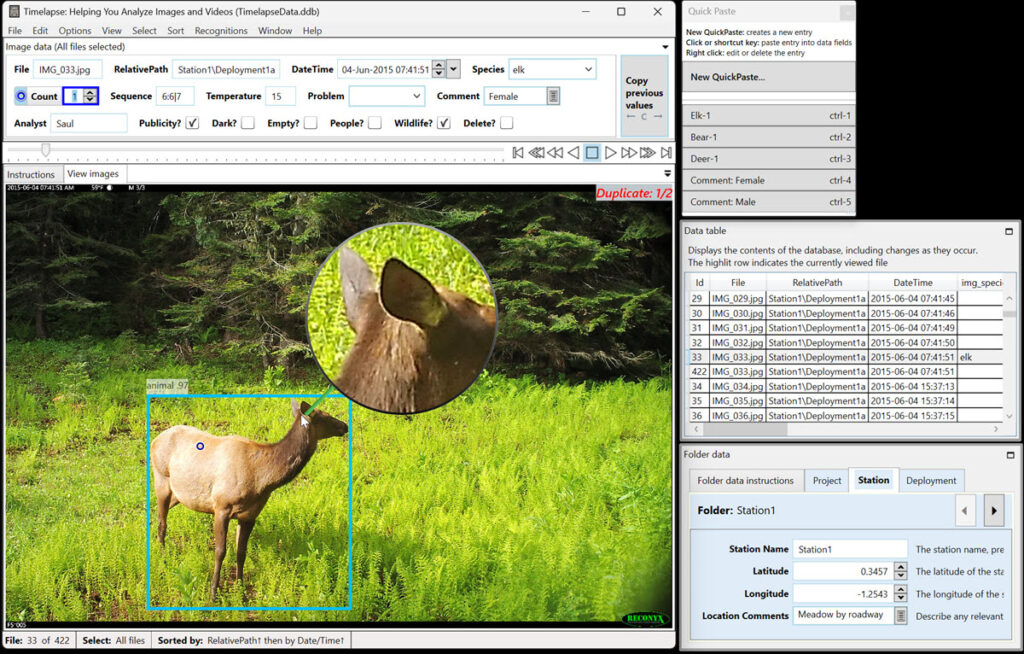Timelapse
Camera traps, remote cameras, field cameras and wildlife cameras are cameras strategically located in the field. They all capture activity at the camera’s location over time. Each camera automatically takes an image or video at pre-set time intervals or through motion triggering. A set of cameras can easily collect thousands to millions of images.
The analyst’s task. After retrieving the cameras’ contents, analysts visually examine each image or video to turn it into data. Ecologists, for example, count and describe wildlife in the scene and conditions of interest (e.g., people, wildlife, weather).
The problem is that visually analyzing and encoding data from this multitude of images and videos is a painful process.
Timelapse is a free software application that helps scientists do this last visual analysis and encoding step as efficiently as possible.
What Timelapse offers

Timelapse is created by Saul Greenberg, a University of Calgary, Computer Science emeritus professor. Its development is also supported by Greenberg Consulting Inc. Contact Saul Greenberg for feature requests, bug reports, and general feedback.
Timelapse is open source with code available for review on the Github repository for Timelapse.
Acknowledgements and attributions. Many Timelapse users provided feedback on how to improve Timelapse – they really helped inform the system design. Timelapse incorporates various components that others have produced and made freely available: they deserve special thanks. See the Timelapse License page for a list of these components and where they are from. Micah Bresette, Ryan Bane, and Todd West contributed to the code base of earlier Timelapse versions. Selected images used with permission from Parks Canada, Idaho Department of Fish and Game, and Lana Ciarniello of Aklak Wildlife Consulting, and the personal collection of Saul Greenberg. All contributors deserve special thanks.